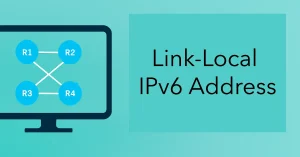What is a Link-Local IPv6 Address – Exclusive Introduction
Routers configured with dynamic routing protocols such as OSPF or EIGRP must send and receive routing protocol messages with their directly connected neighbors. The routers exchange messages between neighbors on the same subnet. These messages are always sent from the router’s source IPv4 address. Link-local IPv6 addresses are perfect for this purpose. The address also […]

